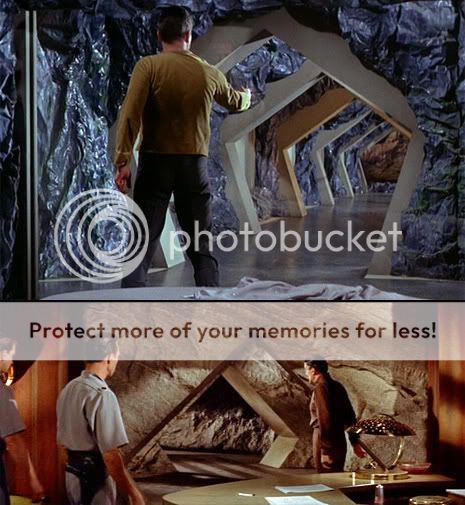I'm looking at pages 356-358 of the book, and although their was some trouble getting NBC to finally order the back half of the second season, I don't get a sense that the threat of cancellation was seriously looming at that point.
The way the book is structured, however, might mean that what you recall is simply in another chapter. I don't see "The Deadly Years" mentioned in the index, but that's not a surefire indicator of anything.
I wish I had more time to leaf through the book, but I'm a little busy this evening...
The way the book is structured, however, might mean that what you recall is simply in another chapter. I don't see "The Deadly Years" mentioned in the index, but that's not a surefire indicator of anything.
I wish I had more time to leaf through the book, but I'm a little busy this evening...





 In "FP" there was certainly no illusion afoot... many of the crew were murdered by Morbius's subconscious. And in the end of "The Cage", the Enterprise leaves and the Talosians are left as they were with Vina. In "FP", we have a dramatic end to the Krell's planet.
In "FP" there was certainly no illusion afoot... many of the crew were murdered by Morbius's subconscious. And in the end of "The Cage", the Enterprise leaves and the Talosians are left as they were with Vina. In "FP", we have a dramatic end to the Krell's planet.